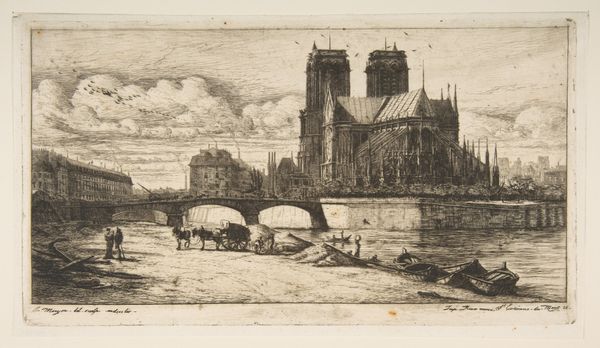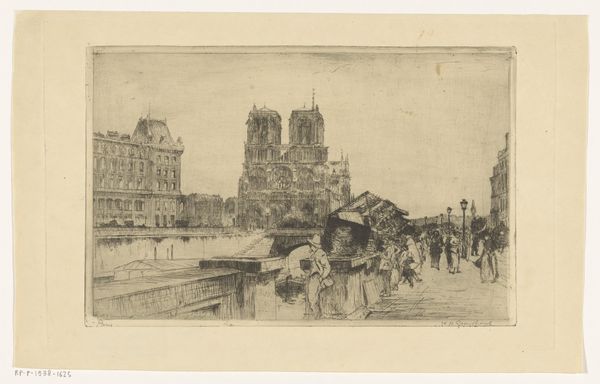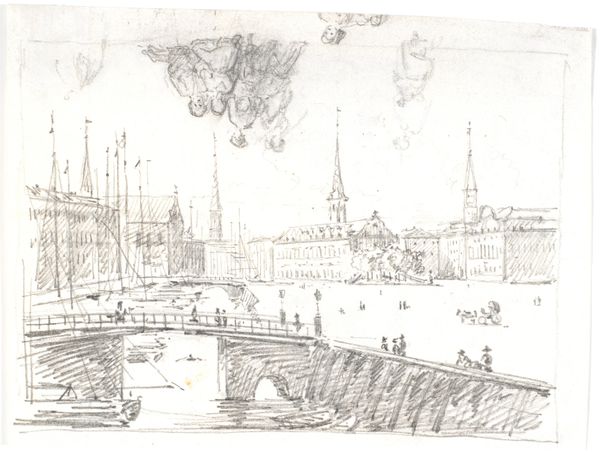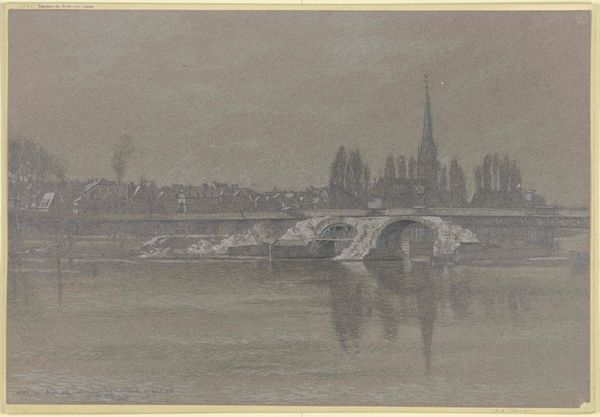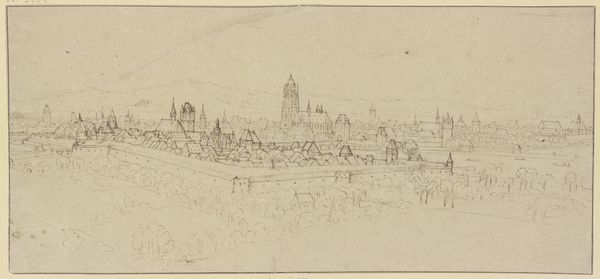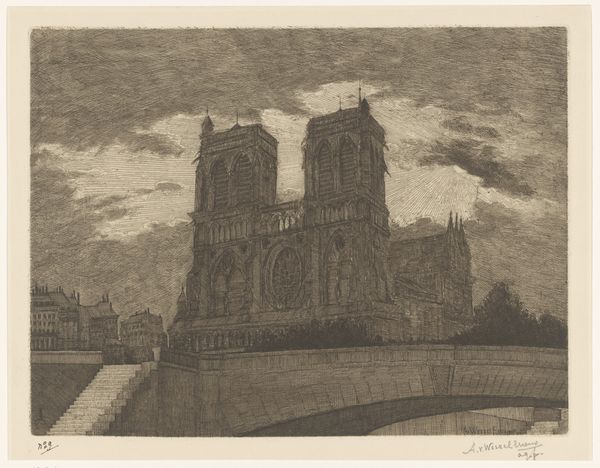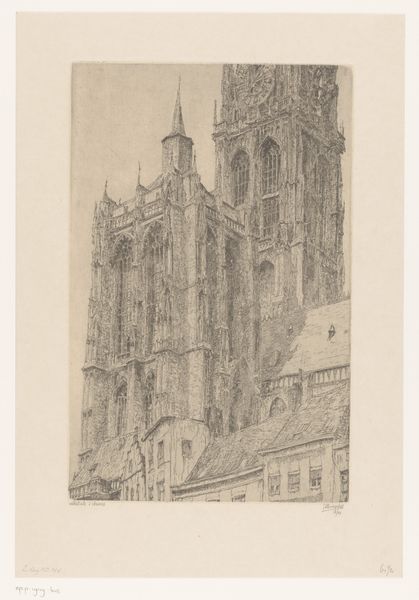
Dimensions: 6-1/2 x 11-13/16 in. (16.5 x 30.0 cm)
Copyright: Public Domain
Curator: Let’s discuss Charles Meryon’s "The Apse of Notre-Dame, Paris," an etching made sometime between 1847 and 1859, now housed at the Metropolitan Museum of Art. Editor: It has an unfinished quality that I find really appealing. It looks more like a preliminary sketch than a finalized print, yet the cathedral is rendered with astonishing precision. Curator: Well, Meryon made preparatory drawings, many in pencil, and transferred the designs to the copper plate before etching. What interests me is the industrial reality behind the artwork; the very paper and ink used reflect broader issues of accessibility, consumption, and labor in 19th century printmaking. Editor: I understand, but what I notice is the interplay between line and space; Meryon’s mastery in depicting depth and texture, all created through meticulously etched lines and varied tone. Curator: Certainly. The industrial reproduction makes it widely available to different economic layers, turning Notre Dame, with its architectural grandeur, into a commodity, one that could circulate widely throughout French society and beyond. Editor: And while its mass production allowed the subject of this artwork, Notre-Dame, to circulate widely, it still focuses attention on details of form and light, creating a dramatic and emotionally stirring composition. There's a poetic element here, almost romantic with the sublime spires of the cathedral contrasting with the more mundane activity around it. Curator: Precisely, this speaks volumes of 19th-century society; cathedrals are reduced to items within commercial trade, blurring boundaries between the sacred and profane, but on the level of individual consumption. Editor: Looking at the artwork again, it's evident how Meryon used a simple etching technique to express a deep emotional response to this architectural marvel. I appreciate its subtle power, its structural beauty. Curator: Indeed, but it’s a product of its time: an urbanizing world transforming landmarks into market commodities through new reproductive technology. The architecture interacts with materials; a product of consumption. Editor: I see your perspective; materials shaping social reality! Meryon has provided much to ponder. Curator: Indeed, a compelling example of art embedded in and shaped by complex processes.
Comments
No comments
Be the first to comment and join the conversation on the ultimate creative platform.




